In modern life, DIY (Do It Yourself) projects not only provide a sense of accomplishment but also save a lot of time and money. Whether you're doing it for simple home repairs, furniture making, or decorative design, having the right set of hand tools can greatly increase productivity and make the task much easier. Using the right tools not only ensures that the project is completed more smoothly but also ensures safety.
While many people think that only professional craftsmen can use these tools, the truth is that learning how to use them properly will not only make your DIY projects go more smoothly but will also improve your skills and confidence. In this article, we'll detail how to use a range of common craft tools for DIY projects and share the features and uses of each.
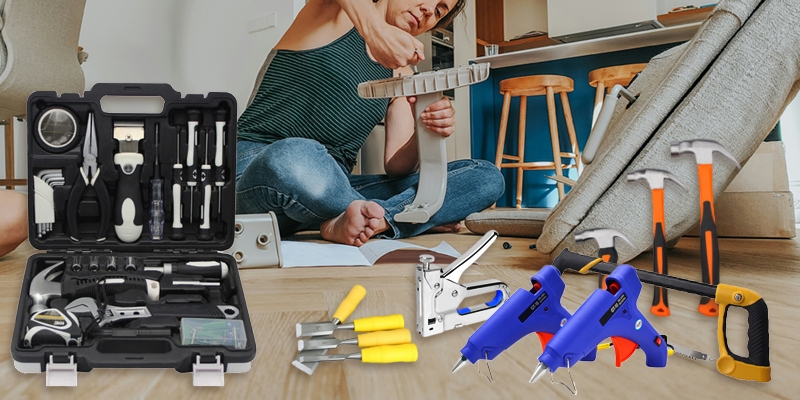
When we talk about DIY projects, many of us may associate them with furniture assembly, house renovations, or home repairs. For these projects, hand tools are indispensable. Whether you are a novice or a seasoned DIYer, the proper use of hand tools can make your projects more efficient and professional. Tools such as screwdrivers, pliers, wrenches, hammers, and saws are common items in almost every home toolbox, and they are not only affordable but also versatile. For more professional use, such as rivet guns, hot melt glue guns, files, chisels, tweezers, etc., also have their irreplaceable role on specific occasions. Tool online shop can let you quickly understand the characteristics and usage of each tool through this article, which can help you to do more with less in your daily repairs, decorations, and handicrafts.
For beginners, choosing the right toolset and mastering the basics are crucial. Knowing what each tool is used for and how it works before you use it can help you avoid mistakes and unnecessary trouble. Whether you're repairing broken furniture, installing new equipment, or creating a custom design, hand tools will be your indispensable helpers.
Essential Tools for Tightening and Loosening Screws
Screwdrivers are one of the most commonly used tools in DIY projects. They are mainly used for tightening and removing screws and come in two common types, Phillips and monogrammed. Screwdriver sets can be categorized as either a one-letter screwdriver or a Phillips screwdriver depending on the type of screw, and it is usually recommended that everyone has a set of screwdriver kits of different sizes and types. Screwdrivers are used in a wide range of applications, from simple appliance repairs to furniture assembly.
When using a screwdriver, it is important to hold it in the correct position. Make sure the head of the screwdriver fits snugly against the screw to avoid slipping and damaging the screw head. For larger screws, use an electric screwdriver for efficiency, while a small manual screwdriver is good for delicate work, such as electronics repair. Getting the right amount of force and avoiding over-tightening screws will prolong the life of screws and screwdrivers.
Multifunctional Clamping and Cutting Tools
Pliers are another multifunctional tool that is commonly used to grip, bend, or cut materials. The most common are sharp-nosed pliers and diagonal-nosed pliers. Sharp-nosed pliers are good for manipulating small parts, and pointy-nosed pliers are especially good for working in confined spaces and are commonly used for attaching and cutting wires, while diagonal-nosed pliers are commonly used for cutting wires or metal filaments.
In DIY projects, and plier sets are especially good for dealing with appliance repairs and wire management. When using pliers, it's crucial to make sure that they have the right amount of clamping force, too much force may result in damage to the material or tool. For thicker metals or cables, choosing larger pliers will be more effective. Whether you're tightening wires or working with tiny parts in a craft project, pliers can be powerful. Pliers are also ideal for undoing tough nuts and tightening or loosening jammed parts, making them a must-have for electricians and mechanics.
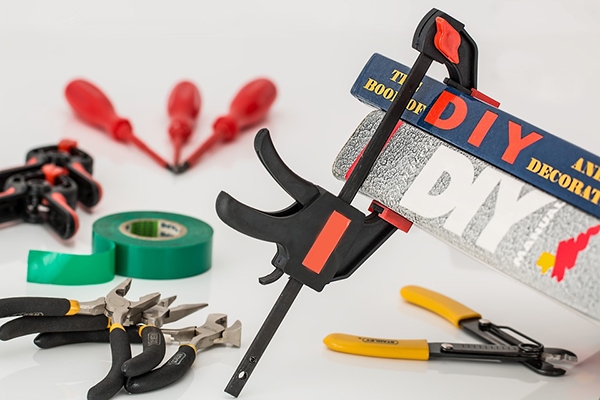
Ideal for Undoing Nuts and Bolts
Wrenches are primarily used to tighten or loosen nuts and bolts and are often very common in mechanical repairs and equipment installations. The advantage of wrenches is that they provide good torque control, making removal and installation more precise. Depending on the nut specification, wrenches come in a variety of sizes, such as adjustable wrenches, plummer wrenches, and socket wrenches. Adjustable wrenches are one of the most common types, which can be adjusted according to the size of the nut and are suitable for use on different sizes of nuts. The use of different type of wrenches in DIY projects involves bike repair, home equipment installation, and car maintenance. The key to using a wrench correctly is choosing the right size, avoiding wrenches that are too small or too large, and ensuring that you apply an even amount of force so that you don't damage the nut or affect the operation. Additionally, making sure you hold the handle portion of the wrench to apply enough torque can increase efficiency.
From Hammering Nails to Repairing a Good Hand
The hammer is one of the most classic tools used for hammering nails, breaking objects, or performing demolition work. An indispensable tool in DIY projects, it can be used not only for hammering nails but also for dismantling and restoration work, mostly for fixing and assembling wooden furniture or for removing old materials. The most common types of hammers are nail hammers and rubber hammers. Nail hammers are good for hammering and removing nails, while rubber hammers are good for those situations where you need to avoid damaging the material, such as tiling. When using a hammer, make sure you have a firm grip and maintain an even force when hammering. Choosing the right hammer, the hammers weight will reduce hand fatigue. For delicate work, a lightweight hammer is more appropriate, while for demolition or larger projects, a heavier hammer can be chosen for efficiency.
Efficient Tightening and Loosening Tools
Ratchet and socket tools are primarily used to efficiently tighten and loosen nuts and bolts. Unlike regular wrenches, socket wrenches can handle nuts more quickly and efficiently, especially in tight spaces, and the one-way rotation feature of the ratchet allows for more effortless operation. These tools are commonly used in automotive repair, bicycle assembly, and other scenarios where frequent tightening of nuts is required. The skill of using a socket wrench lies in choosing the right size socket and ensuring that the ratchet rotates in the right direction. Gradually increase the force during the tightening process to ensure that the nut does not slip or get damaged. Often in DIY projects, especially in car repair and home appliance repair, ratchet tools are a very practical choice, and choosing different sizes of ratchets and sockets can cope with a variety of different sizes of bolts and nuts.
Precise Cutting of Wood and Metal
Saws are important tools used to cut materials such as wood, plastic, and metal. It is especially indispensable in woodworking projects. For DIY projects, hand saws are suitable for cutting wood, such as furniture making or restoration, while metal saws are designed for cutting metal pipes or other hard materials. Depending on the cutting needs, you can choose from different types of saws such as bow saws, miter saws, and metal saws. The use of a saw requires some skill, starting with making sure that the blade of the saw is sharp and clean. It is important to make sure that the teeth of the saw are oriented in the same direction as the material being cut to ensure a smooth and neat cut, keep the blade in steady contact with the material while sawing, and push the saw with an even amount of force. When using the saw, it is best to operate it on a workbench with a fixed object to ensure accurate and safe cutting. For more complex DIY projects, a power saw can provide faster cutting speeds and greater precision.
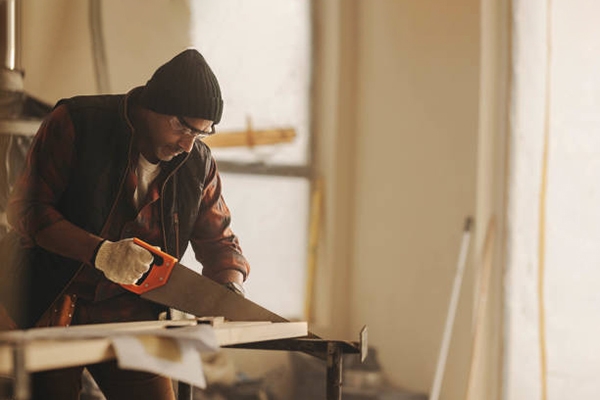
Flexibility with a Variety of Materials
Cutting tools include blades, scissors, and box cutters for cutting materials. Cutting tools can help DIY enthusiasts easily handle a variety of materials including plastic, rubber, and metal during DIY projects. There is a wide range of cutting tools available, such as electric cutters for quick handling of hard materials and hand knives for fine cutting. Whether it's carpet, plastic sheeting, or electrical wiring, cutting tools provide clean, precise cuts. For thicker materials, opt for a heavy-duty cutting tool, such as a power cutter. When using a cutting tool, keeping the blade sharp is key. Dull blades not only cut inaccurately but are also prone to accidents. When using cutting tools, it is best to operate them on a smooth surface and wear protective gloves to avoid scratches.
Secure Objects to Ensure Accurate Operation
In DIY projects, it is often necessary to use high quality clamps to secure objects to ensure precise operations. Whether it's wood cutting, gluing, or drilling, jigs hold objects securely in place to increase efficiency and ensure safety. This is especially true when gluing, drilling, or cutting where the material needs to be held steady. Common fixtures include C-clamps, F-clamps, and spring clamps, which can be adapted to different work scenarios. They can ensure the stability of the workpiece during machining to avoid movement or tilting. When using fixtures, make sure the size and strength of the fixture are appropriate for the size of the material. Fixtures that are too small or too tight may damage the material. When mounting fixtures, it is best to adjust them to fit so that subsequent operations are easier and more precise.
Quickly Join Metal to Other Materials
A rivet gun is primarily used to quickly join and fasten pieces of metal or other hard materials together. It creates a stable connection by applying pressure to embed the rivet into the material. Riveters are widely used in metal fabrication, automotive repair, and building assembly, and are especially good in scenarios that require a strong fixing force.DIY projects and rivet guns are commonly used in the fabrication and repair of metal products, such as metal frames, window installations, and so on. When using a rivet gun, you need to choose the right rivet according to the thickness of the material. When operating, aim the rivet gun at the material and press the handle to ensure that the rivet is firmly fixed in the material. Mastering the operation rhythm of the rivet gun can improve work efficiency and reduce misuse.
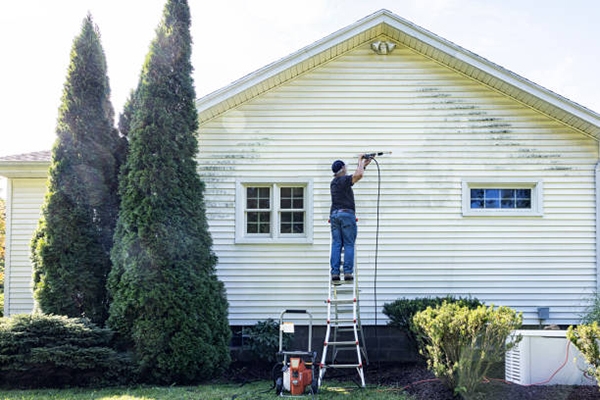
Easy and Efficient Fixing Tool
A staple gun is a powerful fastening tool commonly used to secure fabric, thin boards, or other materials to wood or hard surfaces. It quickly drives staples into the material, providing a long-lasting hold. The staple remover is one of the indispensable tools in furniture assembly and decoration projects. It is very useful in furniture upholstery, carpet fixing, and wall coverings. When using a staple gun, maintain a firm grip and press down on the gun to ensure that the staple is fully embedded in the material. Choosing the right length staple is also critical. A staple that is too short may not hold the material in place, while a staple that is too long can puncture the material and cause damage.
Ideal for Smooth Materials
Used to smooth surfaces, trim edges and remove excess material, files and rasps are common tools used in woodworking and metalworking. They make it easy to work with materials such as metal, wood, and plastics, especially in craft or repair projects, and files provide precise finishing results that result in a smoother material surface. Files are often used for fine sanding work, removing burrs, or smoothing rough surfaces. When using a file, keep the force light to avoid damaging the material by over-sanding. Files are durable and can be used for long periods, making them a popular tool for DIY enthusiasts to sand and finish materials.
Fine Carving and Cutting Tools
A chisel is a common carving and cutting tool used in woodworking projects, mainly for carving and cutting wood. It can be used for fine wood carving and can also be useful when precision cutting is required. In DIY projects, chisel sets can be used to create joints or decorative details in wooden furniture. Depending on the need, you can choose chisels of different widths and angles. When using a chisel, make sure the blade is sharp and that you use the proper amount of force to carve. Usually, you need to use it with a hammer to gradually chisel out the desired shape by striking the back end of the chisel for better results. For beginners, a combination of chisels of different sizes can be chosen to cope with a variety of different carving needs.
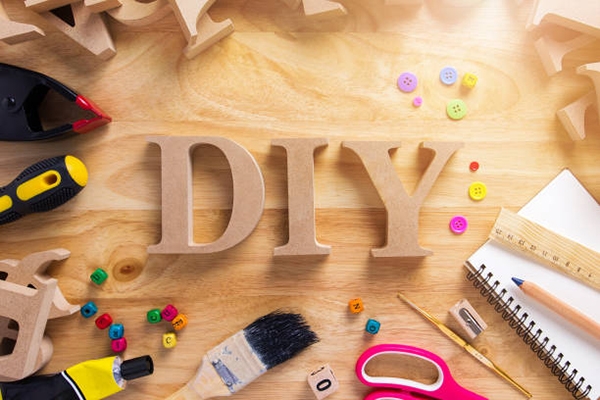
A Great Tool for Handling Tiny Parts
Tweezers are small and precise tools for holding and manipulating tiny objects. Despite their small size, tweezers are very useful in delicate operations, especially in electrical repair, modeling, or small crafts processing. Tweezers can help you handle tiny parts with precision and avoid damage caused by improper finger handling. When using tweezers, keep your hand steady to avoid damaging the material by applying too much force. The different shapes and sizes of tweezers are suitable for handling a variety of tiny parts, making them a must-have tool for craft enthusiasts and technicians alike.
Maintain a Neat and Organized Workspace
Tool storage is an important part of keeping a tidy work environment. Tool storage boxes not only make it easy to store and categorize various tools but also protect them from damage. For different types of tools, choosing a tool storage box with multiple compartments can greatly improve efficiency. When choosing tool storage, consider the type and number of tools and choose the right size storage box. At the same time, having a good set of tool storage can help you keep your workspace neat and organized during DIY projects and reduce unnecessary hassles.
One-stop Solution for Tool Needs
Hand tool kits usually contain screwdrivers, wrenches, pliers, hammers, and many other commonly used tools, making them ideal kits for beginners and experienced DIYers. A good hand tool kit should be versatile and usually includes a wide range of commonly used tools such as screwdrivers, pliers, wrenches, and hammers, capable of meeting a wide range of common household repairs, as well as many different DIY needs. Having a well-rounded tool set will allow you to tackle a wide range of home repairs and DIY projects. Regularly checking the condition of your tools and making sure each tool is in working order is key to maintaining the longevity of your tool set. Choosing a high-quality craft tool set can greatly enhance your DIY experience.
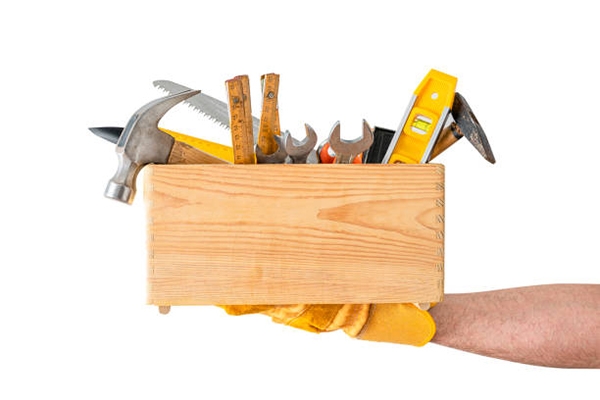
Quickly Glue Multiple Materials
A hot melt glue gun is a convenient and fast bonding tool that can firmly bond a wide range of materials such as plastic, wood, fabric, etc. A hot melt glue gun is suitable for small repairs, handicrafts, and temporary fixing. When in use, simply insert the glue stick into the gun and wait for the glue to melt to produce an adhesive that bonds different materials together. When using a hot melt glue gun, make sure you operate it securely and preheat the gun before bonding. The glue will set quickly when it cools, so you need to complete the bonding job in a short time.
Ensure Lighting and Safety
Flashlights are useful in cramped, dimly lit work environments, especially during electrical repairs or nighttime operations. Flashlights should be selected with brightness and battery life in mind to ensure prolonged use. A high-quality flashlight can greatly improve work efficiency, especially in situations where illumination is difficult. Whether you are operating in a confined space or working on a DIY project outdoors, a flashlight is an essential tool. It can provide you with ample illumination to ensure that you can complete your tasks with precision even in dimly lit environments. Choosing a lightweight, durable flashlight can greatly enhance the convenience of your DIY projects.
By mastering these basic crafting tools, DIY projects will become much easier and more enjoyable. Each tool plays a unique role in different application scenarios, from basic home repairs to complex woodworking or metalworking, and each one adds more possibilities to your projects. Whether it's a basic tool like a screwdriver, pliers, or hammer, or a specialized tool like a rivet gun or hot melt glue gun, they all play an important role in different scenarios. Mastering the proper use of these different type of hand tools will not only make your DIY projects go smoother but also increase efficiency and safety. Having a suitable set of tools and maintaining them regularly will ensure that they will serve you for a long time and become reliable helpers in your hands. Whether you're repairing appliances, assembling furniture, or creative crafts, the proper use of hand tools will allow you to excel.

